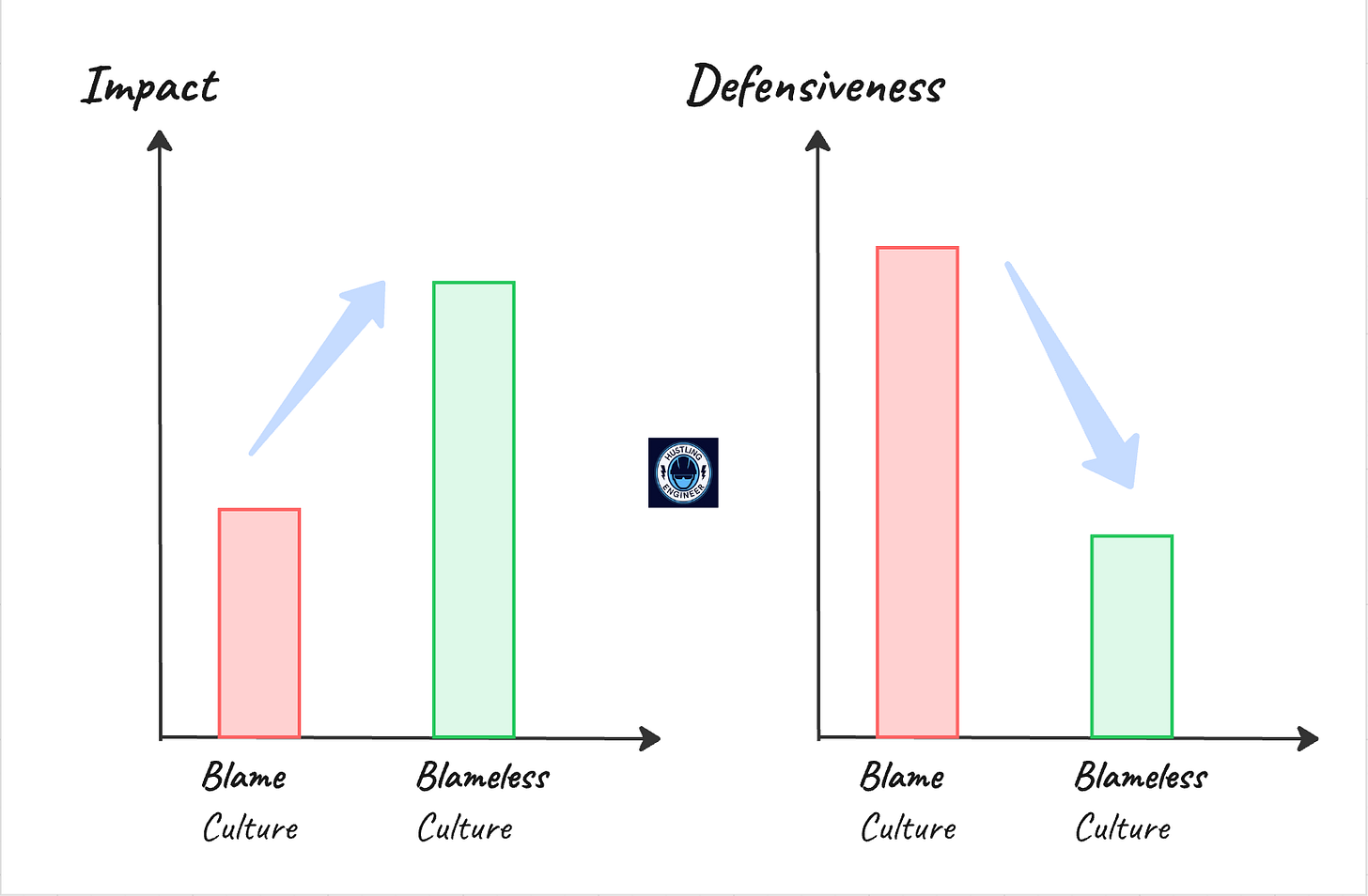Why the Best Engineering Teams Don’t Play the Blame Game
I once deleted a production-like staging database in my very first job
Gone
Poof
An entire team’s testing and productivity were wiped out in one wrong command.
My heart stopped.
My Slack DMs started blowing up.
And I was absolutely sure - this was the end of my career.
But to my surprise, instead of a public shaming session, my manager called a blameless post-…


